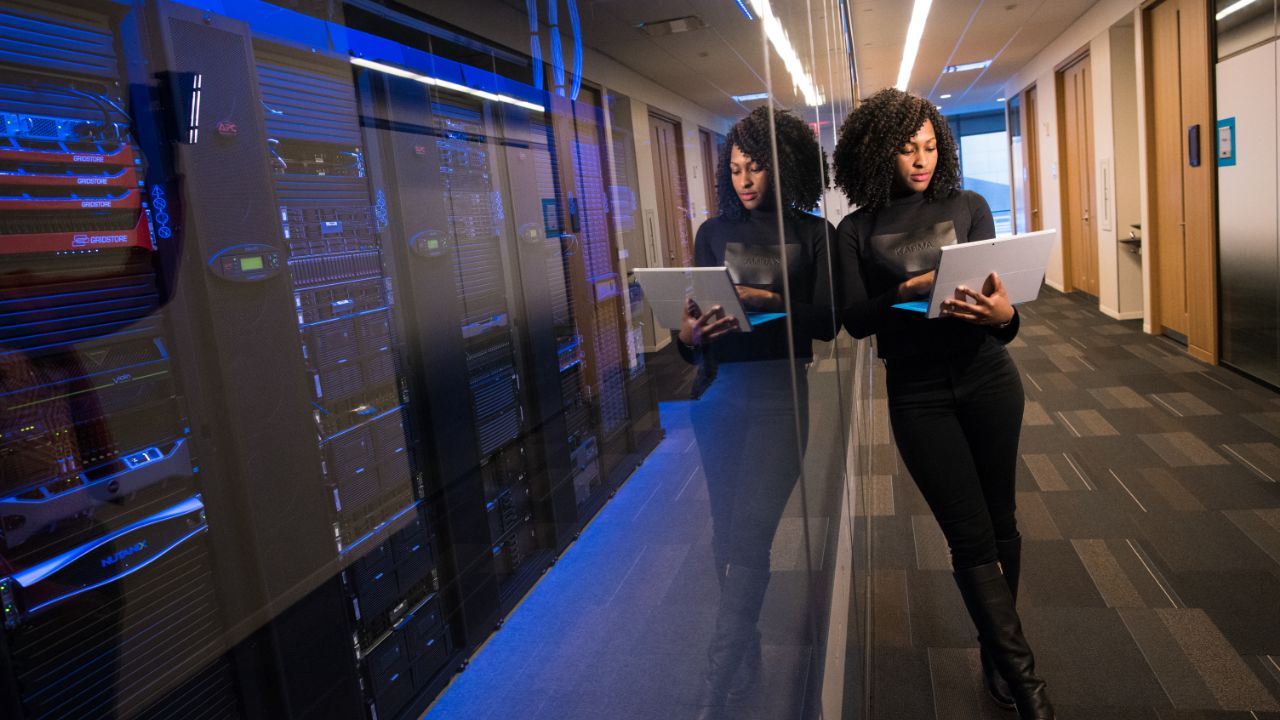Business Internet costs for commercial landlords in London
Increasingly Internet connectivity is seen as the fourth utility for businesses in London. Internet access is a key component for business success; without a fast and reliable Internet connection, a business risks becoming less competitive or failing. For commercial landlords (and their agents and advisors), this is a massive elephant in the room when it comes to providing an office workspace that is attractive to prospective commercial tenants.
This article describes why commercial landlords need to take a proactive stance when it comes to getting Internet connectivity for their office building(s), what the process is and the associated costs.
Why should landlords even care about Internet connectivity in their buildings?
Step back a relatively short number of years and Internet connectivity never reared its head as a key condition in lease negotiations. In the days when fax machines were still the primary vehicle for sending data from one person to another, the hunger for data was nowhere near the level we see today. All that was needed to exchange phone calls, faxes, and then the dial-up Internet were telephone lines. They were, and remain, easy to install. Installation lead time rarely gave existing or prospective tenants cause for concern; the impact on conducting business as usual was minimal.
However, the exponential pace of technological developments in subsequent years, and the amount of data that businesses spew out and consume have led to a growing thirst for data that continues to grow from year to year.
Commercial landlords need to sit up and pay attention, because Internet connectivity is one of the key factors that business tenants consider when searching for office space or deciding whether to renew an existing lease.
What are the main factors business tenants consider when searching for office space?
The main factors that business tenants consider in their hunt for new office space are:
- Size
- Cost
- Internet connectivity
- Location
The size of the office space coupled with the cost are obvious factors so there’s no surprise that they occupy the top two slots. Perhaps surprisingly, the geographical location of a potential office has been demoted from the top-3 slot. Modern businesses increasingly rely on a business-grade Internet connection to optimise their productivity and remain competitive. As a landlord you’re fully entitled to leave it to your tenants to organise their own Internet connections, but readily available Internet-connectivity is increasingly becoming an expectation for businesses.
Business tenants are less patient and less willing to bear the pain and cost of completing wayleave agreements on top of the other costs associated with moving to a new office. Even when tenants are looking at specific areas of London, supply outweighs demand, so tenants have a choice. Given the choice between a property with no Internet or one that already has Internet, tenants are increasingly opting for the Internet-ready option. Thus, landlords who have not acted are experiencing longer void periods as well as longer time-to-occupancy.
If there’s no Internet connectivity in place:
- The best outcome may be that the tenant still wishes to proceed with the lease but negotiates a delay in the rental payments and/or delays taking occupancy until the internet line is active.
Bear in mind it has been known to take over 12 months for some Internet Service Providers (ISPs) to get their fibre installed and active. ISPs typically estimate installation times between 30 and 90 working days, but these timescales can be extended by a number of factors, including waiting for permits from local authorities to perform groundworks, the back-and-forth between solicitors and any challenges/changes to the proposed route or method of works to be carried out.
- You may have to ready yourself to the possibility of losing both existing and future tenants to other landlords who have their house in order and have been proactive about making sure that their buildings are Internet-ready.
Top 4 things a landlord needs to do to make a building Internet-ready?
For most landlords the process of organising Internet connectivity in their buildings is alien to them because, as mentioned before, it’s not something that they’ve had to worry about historically. To help, we outline the four most important things a landlord needs to do to get their building Internet-ready.
- Identify which ISPs can connect to your building
The main go-to ISPs in London are BT, Colt, Luminet and Virgin Media (However, there are other providers including G.Network, Hyperoptic, CityFibre, and more). When you provide them your building address, they will tell you whether (subject to a conducting a site survey) they are able to deliver their service into your building. They will also give you an estimate of how long it will take for the service to be activated. You will need to use this information to decide on your preferred ISP as most will not instruct a site survey until they have received a signed order from you.Our team at Techsolve can manage this process for you. We have relationships with several ISPs and can confirm which ones are best for your building.
- Consider instructing more than one ISP
There are undeniable benefits for you and your tenants if you install a primary AND secondary Internet connection. This is sometimes referred to as a resilient or diverse Internet connection. The secondary connection will be activated either automatically, or with manual intervention (depending on how it has been set up) if the primary connection experiences an issue, thereby avoiding business disruption.
- Complete wayleave agreement(s)
For ISPs to install and maintain their telecoms equipment in your building(s), you must grant them special access rights. These rights to access the building and retain equipment onsite are provided on license to the ISP in a legal document called a wayleave agreement. You must complete a wayleave agreement with each ISP that you instruct to install equipment in your building. There are also legal fees you will have to pay – more on this in the next section.
- Give your building a backbone
Your ISP is likely to place their equipment (often referred to as terminating equipment) in a secure location in your building – typically a lockable room in the basement or in an electrical riser. This is a big step in the right direction as having at least one ISP’s equipment in your building (referred to as being “On-Net” by the ISPs) will have dramatically reduced the lead time for tenants being able to get an active connection in their demise from months to a few days. However, there is still the issue of running cable between the ISPs’ terminating equipment and the tenant’s communications cabinet, located somewhere in their demise. As the cable route may traverse landlord and public areas in the building, it is likely that your solicitor will recommend you complete an additional legal document called a License to Alter (LTA) for EACH cable run! You could insist that each tenant is responsible for your solicitor fees as well as their own, but the costs and time involved in the LTA process would negate some of the benefits you wanted to offer your tenants in the first place.There is an alternative; you give your building a backbone. Simply put, a network backbone is like a skeleton, but for your building. At the same time that you arrange for the ISP(s) to install an active Internet connection to your building, you get multiple data cables run through your building from the ISP’s equipment to an entry point at each office unit, all as one set of works. This means that when tenants want to get an Internet connection, the only work they perform to connect to the equipment is within their own demise, i.e. no landlord permissions, no disruption to other tenants, no legal fees for LTAs to be drawn up, and no delay in activating their connection as soon as possible. A true plug-and-play solution for incoming tenants! Techsolve simplifies the entire process for landlords and their advisors by determining the most appropriate technical solution for the building, dealing with the ISPs, solicitors and data cablers in order to get a successful solution implemented.
What are the costs of making a building Internet-ready?
The costs can be broken down into 4 key areas.
- ISP installation fees
These fees can vary considerably depending on which ISPs you use, the total speed/bandwidth available on the Internet circuit you order (the bearer size), and the length of the initial agreement you sign with them. Increasingly, ISPs offer free installation when an initial term of 36 months is agreed. Otherwise, expect to pay between £100 and £2,500.
- Ongoing Monthly Service Fees
The monthly fee you pay for your building’s Internet connection will depend on your ISP selection, the bearer size, the Internet speed you order and the duration of the agreement.
- ISP selection
Each ISP charges different rates, plus they sometimes have price promotions. - Bearer size
The larger the bearer you order, the more bandwidth is available to your tenants for current and future needs. Depending on the size of your building or the number of units available for lease, we recommend a minimum of 1Gbps or 10Gbps bearer (1 Gbps = 1,000Mbps). - Internet speed
You may find that 50Mbps is more than enough for all things related to building management such as CCTV remote monitoring, Internet for Reception, Guest Wi-Fi, etc., leaving plenty of bandwidth for tenants to order their required slice of the bearer ‘cake’. - Duration of the agreement
The longer the initial term of the agreement, the lower the monthly fee that ISPs charge.
- Solicitor Fees
Solicitors currently charge £1,000- £1,500 for each wayleave agreement they administer. Licences to Alter (LTAs) may cost slightly less, up to £1,100. - Backbone Installation Fees
These fees cover the costs of data engineers, data cables and networking equipment. The amount will vary depending on the size of your building, the number of floors and the degree of baked-in complexity that the building demands. Fees can range from circa £4,000 for small three-storey buildings to £20,000+ for larger multi-storey buildings. Landlords also pay an ongoing monthly fee to have the network equipment managed remotely, giving them peace of mind that any issues that arise are proactively resolved by the outsourced provider. The monthly network management fee is usually charged on a per network device basis. Techsolve has successfully managed and completed the above process for multiple landlords, either directly or through their property advisory firms.
Remember that this is an investment in your building. It gives your building a competitive advantage over other buildings that do not have Internet connectivity. A return on the investment is often achieved within 1-2 months of receiving the rental income from ONE of your multiple units within your building.
Are you ready to explore the Internet Connectivity options for your commercial building(s)? Get in touch with us for a no-obligation exploratory chat.




